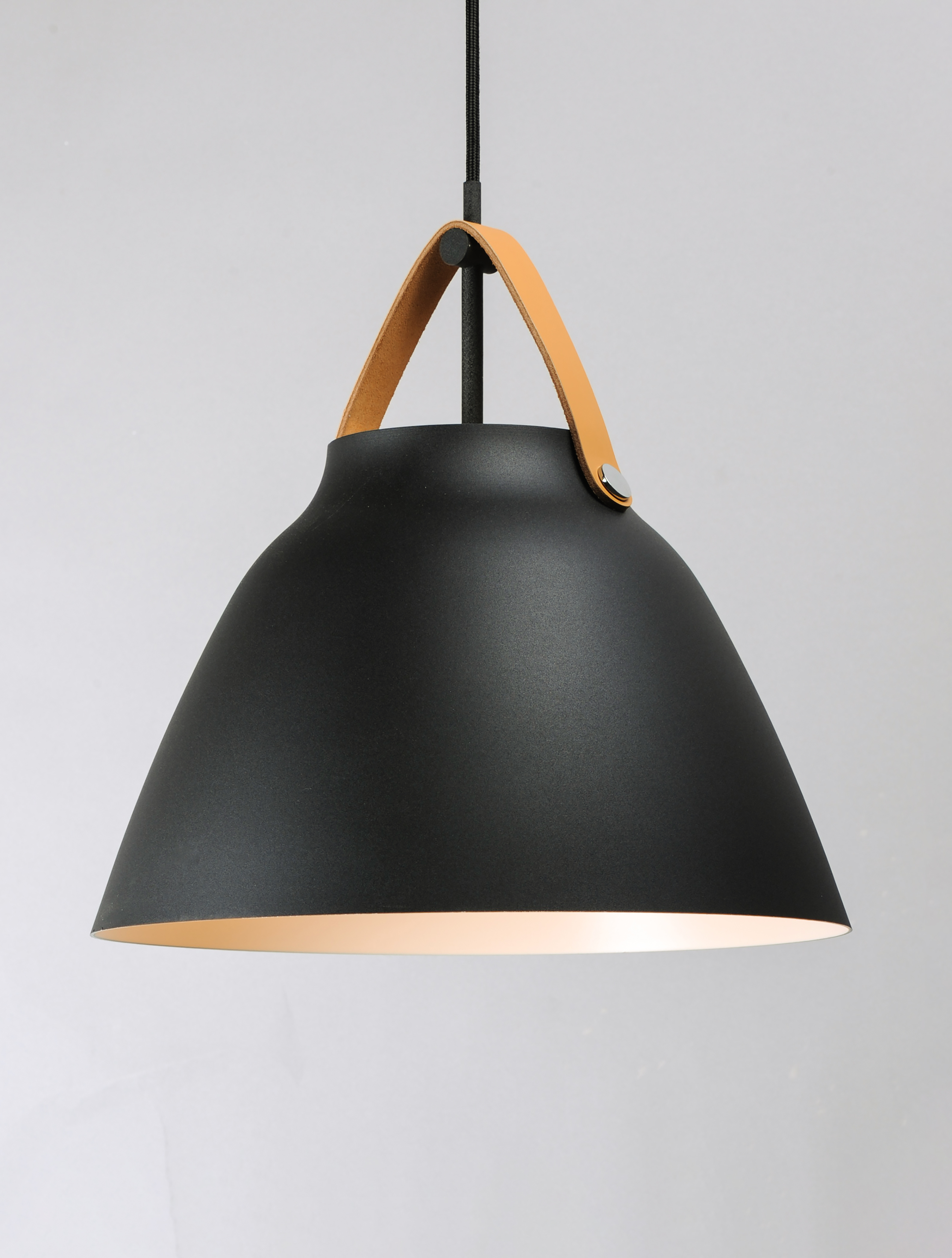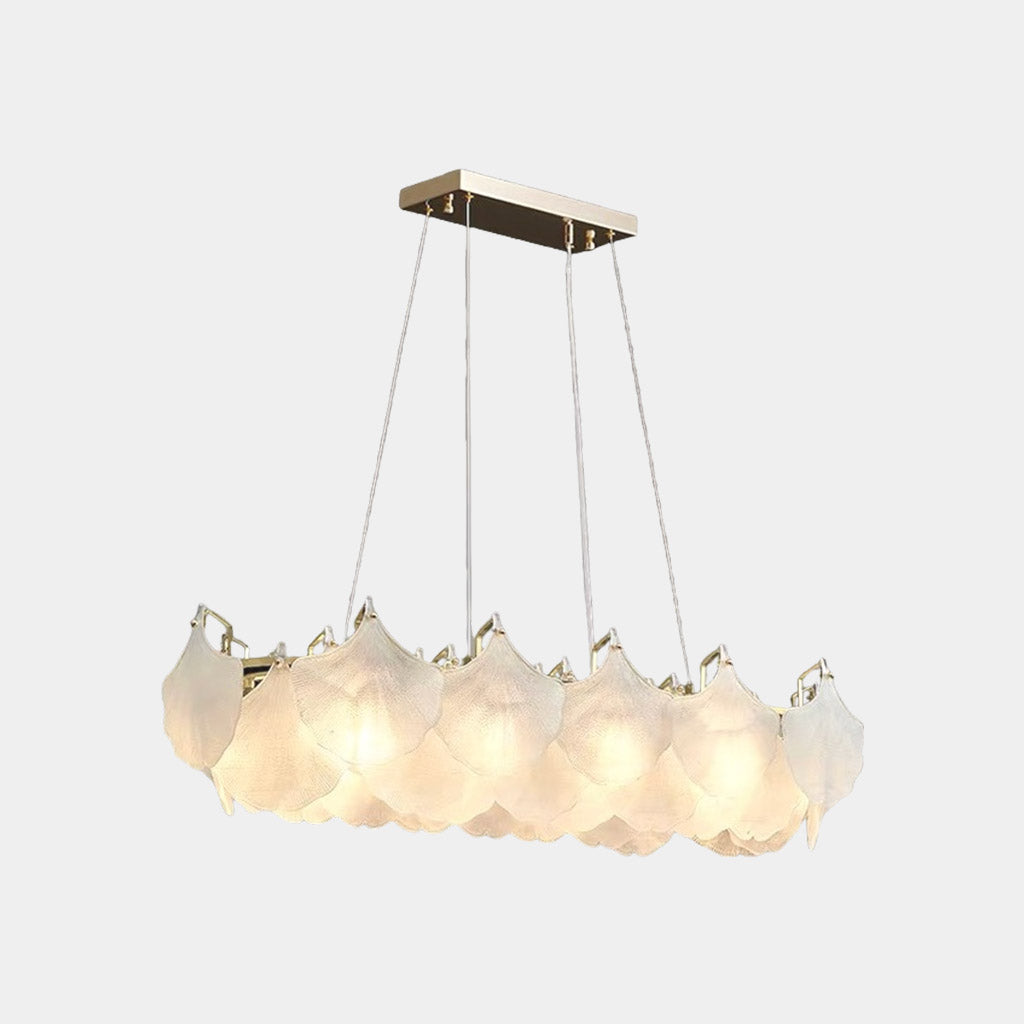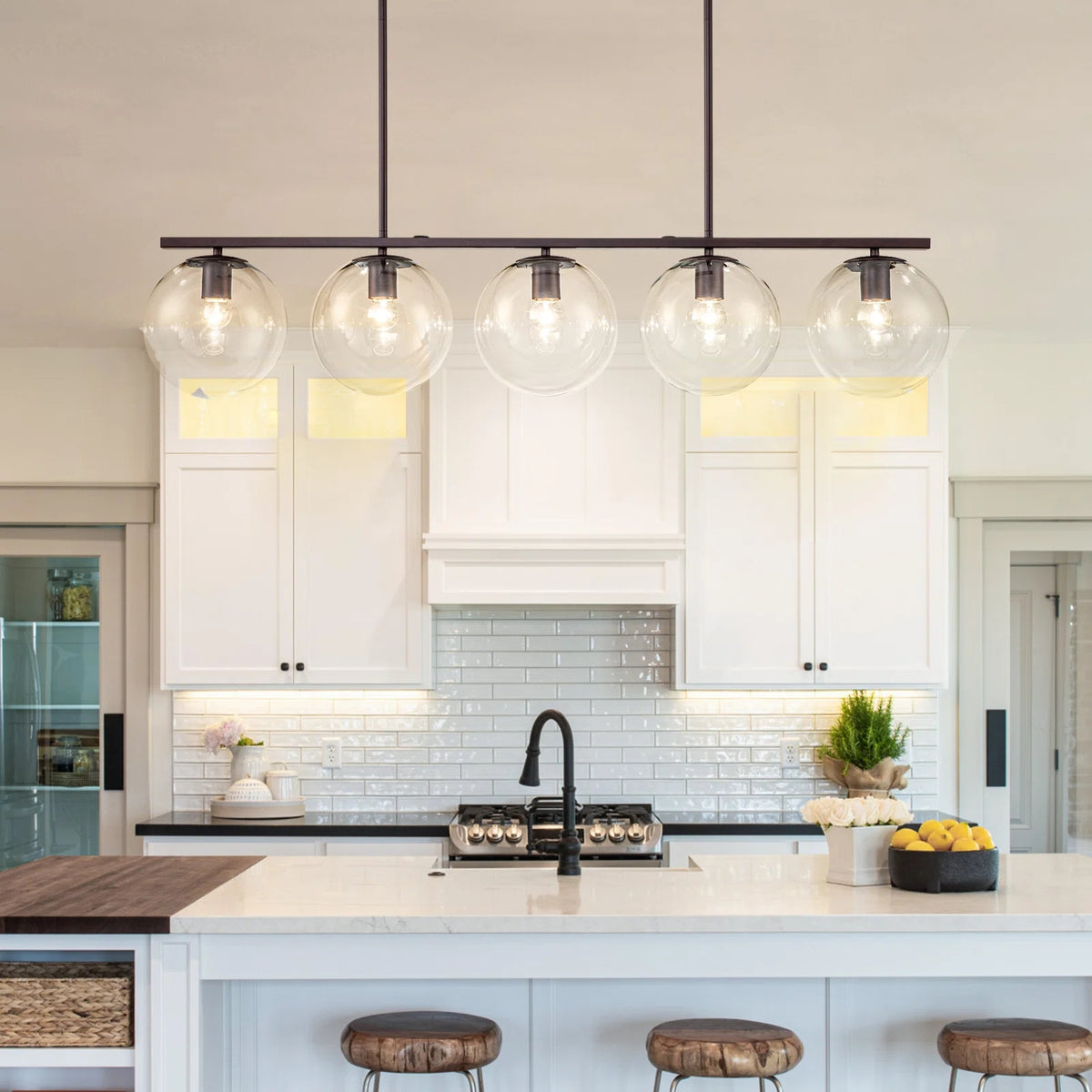Why a Pendant Light Is the Hidden Ingredient for a Warm Kitchen Setting
A Comprehensive Guide to Installing and Keeping Your Pendant Light
Mounting and keeping a necklace light calls for cautious preparation and execution. Appropriate height dimensions can enhance both performance and layout. Vital devices and a clear installation procedure are vital for a successful configuration. Normal upkeep warranties long life and performance. Comprehending these aspects can change an area. Nevertheless, knowing where to begin might seem frightening. What steps should one prioritize to accomplish the most effective outcomes?
Understanding Pendant Light Styles
While numerous house owners look for to improve their spaces with Pendant lights, recognizing the different designs available is crucial for making an informed choice. Pendant lights come in a wide variety of designs, each offering one-of-a-kind aesthetic and functional benefits. Standard Pendant lights frequently include timeless shapes and products, such as glass or steel, providing a classic appeal. Contemporary designs, on the other hand, may incorporate strong colors and innovative materials to develop striking centerpieces.
Industrial-style pendants often make use of raw materials like exposed light bulbs and rustic coatings, appropriate for loft spaces and modern setups. For a much more whimsical touch, vintage-inspired options evoke fond memories with complex details and retro finishes. In addition, minimal layouts concentrate on simplicity and tidy lines, interesting those that like understated sophistication. Understanding these varied styles enables homeowners to choose Pendant lighting that not only complements their style however also offers their functional illumination requires properly.
Determining the Suitable Height for Your Pendant Light
How does one establish the ideal elevation for a pendant light? To achieve the finest functionality and aesthetic charm, several aspects should be considered. Commonly, a pendant light need to hang 30 to 36 inches over a table to assure sufficient lighting without obstructing sights. Precede with high ceilings, the component might be placed a little greater to preserve symmetry.
For kitchen islands, a height of 28 to 34 inches above the counter top is usually suggested, permitting for sufficient light insurance coverage while keeping an inviting atmosphere. In living locations, the Pendant should be hung at a height that enhances the surrounding decoration and does not develop a hazard for people strolling beneath it.
Eventually, individual preference and area measurements play substantial roles in determining the ideal height. Testing different heights before last installation may help achieve the desired effect and functionality.
Devices and Materials Needed for Setup
Effective installation of Pendant lights calls for a details collection of devices and products to assure a smooth procedure. Crucial devices consist of a screwdriver, cable stripper, and a drill, which help with secure fixture add-on and appropriate electrical wiring. A voltage tester is vital for validating safety and security by ensuring that power is off prior to starting any kind of electrical job.
Along with devices, specific materials are required for installation. These include the Pendant lighting fixture itself, electric circuitry, cable nuts for safe connections, and mounting equipment. A ceiling hook might likewise be needed, depending on the fixture's layout.
For included safety and security and convenience, a ladder will aid in reaching high ceilings, while a degree guarantees that the light hangs evenly. Preparing these tools and products beforehand enhances the installation procedure, making it much more reliable and efficient. Appropriate preparation is crucial to attaining a successful Pendant light installation.
Step-by-Step Installment Process
With the required devices and materials gathered, the setup process for Pendant lights can start. The power supply should be transformed off at the circuit breaker to ensure safety. Next, the placing brace requires to be connected to the electric box in the ceiling. After protecting it, the electrical contractor's tape should be made use of to cover any revealed cables.
Complying with that, the Pendant light's wires are attached to the matching cords in the ceiling: black to black (or red), white to white, and green or copper for ground. Once the connections are made, they must be secured with cord nuts.
The Pendant light can then be connected to the placing brace, making sure it hangs at the preferred elevation. Ultimately, the light bulb is put, and the power is transformed back on at the circuit breaker, allowing the new Pendant light to light up the room.
Maintaining and Cleaning Your Pendant Light
What actions should be taken to ensure the long life and aesthetic appeal of Pendant lights? Normal maintenance and cleansing are essential in protecting their elegance and functionality. Dirt and dirt can build up on Pendant lights, decreasing their luster. To clean up, a soft, lint-free towel or microfiber towel need to be made use of, along with a mild cleaner ideal for the surface area product - Pendant Light. For glass or crystal pendants, a glass cleanser can enhance clarity without streaks
It is a good idea to transform off the light and enable it to cool prior to cleansing. Furthermore, inspecting the component for loose light bulbs or links periodically guarantees safety and peak efficiency. If applicable, changing bulbs consistently protects against strain on electrical elements. Keeping a secure setting by avoiding direct exposure to wetness can greatly prolong the life of Pendant lighting. Adhering to these steps will maintain Pendant lights looking their best while operating efficiently.
Repairing Typical Pendant Light Issues
When pendant lights breakdown, a number of typical issues may arise, including flickering light bulbs, wrong installation, and voltage variations. Identifying the root reason is important for reliable troubleshooting and making sure peak efficiency. Dealing with these issues without delay can boost the durability and functionality of Pendant illumination components.
Flickering Light Bulbs
Flickering light bulbs can be a resource of stress for house owners, typically signaling underlying electric issues or basic maintenance demands. This phenomenon might stem from loose bulb links, where the light bulb is not safely matched the socket, creating intermittent get in touch with (Pendant Light). In addition, defective or aging bulbs may flicker as they near the end of their lifespan. An additional usual reason is inconsistent voltage, which can develop from concerns within the electric system or overwhelming circuits. Homeowners should likewise inspect for damaged electrical wiring, as this can lead to flickering and position safety dangers. Normal evaluations and prompt substitutes are crucial to assure correct capability and to preserve a risk-free home environment. Identifying the origin without delay can avoid additional problems

Inaccurate Installation Issues
Inappropriate setup of Pendant lights can cause a series of issues that may appear like those triggered by flickering light bulbs. Typical issues include loose wiring connections, which can disrupt the circulation of power and result in recurring lights. Furthermore, if the mounting bracket is not firmly secured, the Pendant may hang erratically, producing an unpredictable component that can trigger vibrations or sound. Inaccurate bulb kinds or wattage can likewise add to efficiency problems, as incompatible light bulbs may not operate successfully in the component. Ultimately, poor spacing from the ceiling can create darkness or reduce light circulation, reducing the designated result of the Pendant light. Recognizing and dealing with these installment errors is necessary for achieving correct functionality and aesthetic appeal.
Voltage Fluctuation Troubles
Although Pendant lights can boost a room's atmosphere, voltage fluctuations can bring about considerable performance problems. These variations may trigger flickering lights, lowered brightness, or even early light bulb failure. To detect such troubles, one ought to first examine the light's compatibility with the voltage supply. Utilizing a multimeter can assist gauge voltage levels and determine abnormalities. It might be essential to check the electric system for loose links or damaged electrical wiring if voltage problems persist. In many cases, getting in touch with a certified electrical contractor is suggested to assure safety and security and conformity with neighborhood codes. Effectively resolving voltage variations not only improves the performance of Pendant lights but also expands their life-span and boosts general illumination high quality.
Enhancing Your Space With Pendant Light Placement
Effective Pendant light positioning can substantially improve an area by adhering to ideal elevation standards, making sure the appropriate illumination level. Layering these lights with other sources can develop a well balanced atmosphere, highlighting focal points within the area. Attaining a harmonious look calls for cautious consideration of both the component's placement and its partnership with bordering elements.
Optimal Height Standards
When considering the optimal elevation for Pendant lights, a basic guideline recommends hanging them around see post 30 to 36 inches above a kitchen counter or table surface area. This height permits for maximum illumination while guaranteeing that the light does not block sights or develop dangers. In dining locations, Pendant lights ought to be placed to improve the dining experience, generally around 28 to 34 inches over the table. For kitchen area islands, maintaining harmony across several pendants can create a natural appearance; spacing them evenly and adhering to the suggested height enhances capability. It is necessary to think about ceiling height as well, as greater ceilings may need modifications to keep proportionality and visual allure. Correct elevation placement significantly adds to the general setting of a space.
Layering With Other Lights
As Pendant lights are incorporated right into a more comprehensive lighting style, they can greatly improve the ambience of a room. Their convenience allows them to be layered with ambient, task, and accent illumination, producing an unified balance. Combining pendant lights with recessed lights can offer basic illumination while highlighting particular areas. Job lights, such as under-cabinet lights, can match necklaces in cooking areas, ensuring performance without compromising style. Accent lights, like wall sconces, can additionally improve the atmosphere, accentuating art work or building attributes. By purposefully placing these source of lights, homeowners can achieve depth and measurement, transforming a common space into a magnificently lit up setting that accommodates various activities and state of minds.
Centerpieces and Equilibrium

Strategically positioned Pendant lights can work as enchanting prime focus within a room, attracting the eye and enhancing the general aesthetic. When choosing pendant lights, it is important to think about their shade, shape, and dimension to ensure they enhance the existing decoration. A bold, extra-large Pendant can create a striking centerpiece above an dig this eating table, while smaller sized fixtures might function much better in clusters to achieve a balanced appearance. Furthermore, positioning Pendant lights at differing heights can add deepness and visual rate of interest to the room. Keeping equilibrium with other components, such as furnishings and wall surface shades, will certainly ensure that the Pendant lights improve the area without frustrating it. Thoughtful placement changes the setting, creating a harmonious and welcoming ambience.
Regularly Asked Questions
Can I Mount a Pendant Light in a Recessed Ceiling?
The inquiry of whether a necklace light can be set up in a recessed ceiling commonly emerges. Usually, it is feasible with proper mounting equipment, ensuring proper support and electrical links for efficient and risk-free installation.
What Kind of Bulb Is Ideal for Pendant Lights?
When selecting bulbs for Pendant lights, LED options are typically preferred due to their power efficiency and durability. Furthermore, the color temperature level must match the preferred atmosphere, with warm white being a popular choice for comfy settings.
Are Pendant Lights Safe for Outdoor Usage?

Exactly how Do I Choose the Right Pendant Light Electrical Power?
Choosing the appropriate Pendant light power level entails assessing the space's dimension, wanted brightness, and component compatibility. Normally, lower power levels suit ambient illumination, while greater wattages give task lights, guaranteeing capability and aesthetic charm.
Can I Make Use Of a Dimmer Switch With My Pendant Light?
The concern emerged whether a dimmer switch might be utilized i was reading this with a necklace light. Typically, if the light and bulb work, a dimmer button can effectively improve setting and control brightness levels.
When pendant lights malfunction, numerous usual issues may emerge, consisting of flickering light bulbs, incorrect setup, and voltage variations. Incorrect installment of Pendant lights can lead to a range of problems that might resemble those triggered by flickering light bulbs. Poor spacing from the ceiling can develop shadows or lower light circulation, decreasing the designated result of the Pendant light. Effective Pendant light placement can substantially enhance a space by sticking to ideal height standards, ensuring the best illumination degree. When picking light bulbs for Pendant lights, LED options are typically liked due to their power performance and longevity.